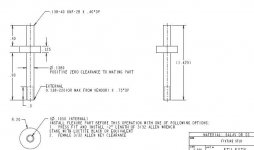Having done a fair amount of prototyping and instrument development work, this is often an area of subjective judgment in defining "almost zero slack". Your literal description of the fit is something I would call a "close slip fit", as "press fit by hand" is something pf an oxymoron. Having some numbers is always helpful when committing to actual part production. In my estimation, you are looking at something like +.0001/.0002" over the mating part diameter
Assuming that definition isn't a fatal obstacle, have you considered adapting off the shelf hardware for the application, such as the Thorlabs Extremely Fine Hex adjuster series of components? I think they offer 6-80, as well as M2.5 and M3 x 0.20 pitch, which would translate to about 127TPI. Could the shaft component be made from two pieces?
Do you have expectations of small radii in the internal corners of the flexure, or sharp corners?
Last, how close do the threads need to be to the shoulder, on the short end of the shaft part? This could relate to the above question about two-piece construction as well.





